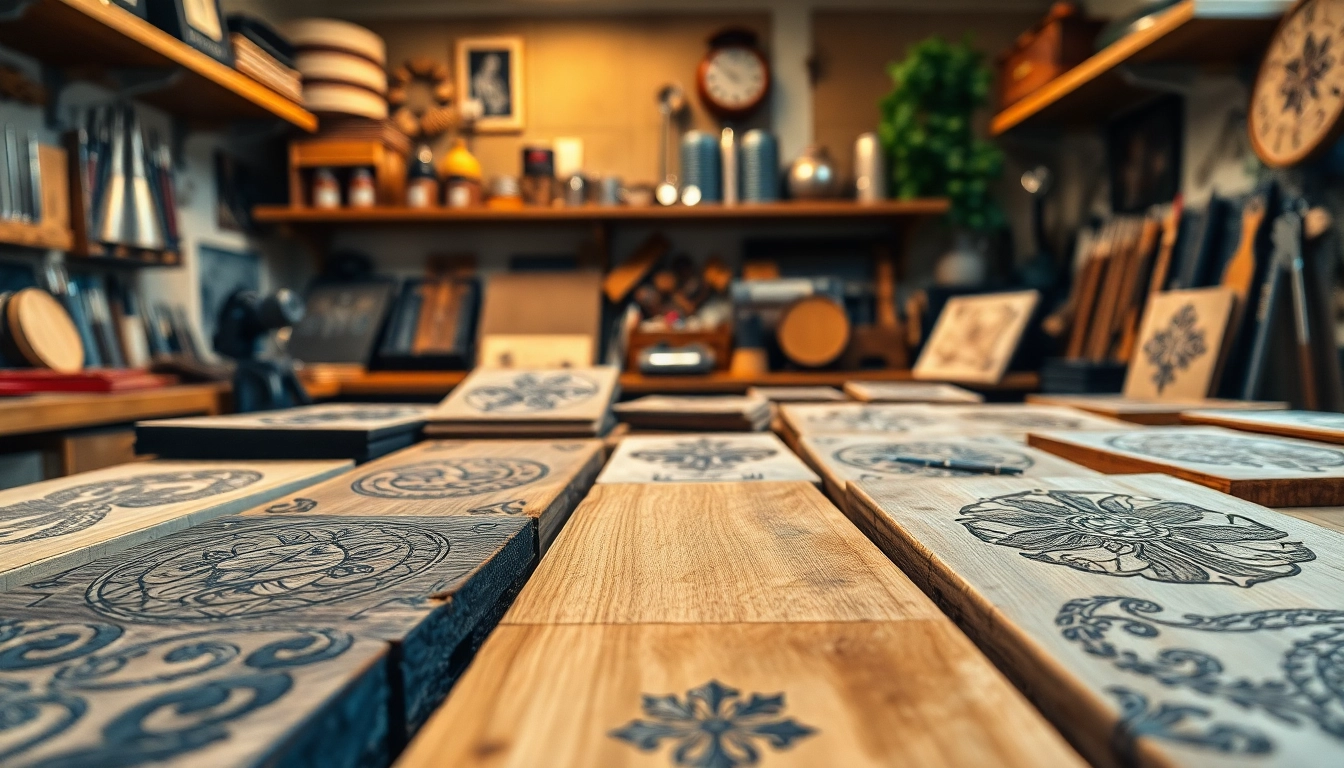Understanding Engravings: An Overview
Engravings are a fascinating form of art that involves incising designs on hard surfaces. From intricate designs on jewelry to detailed graphics on metal plates, the practice has a rich history and a variety of applications. Engravings have evolved significantly over time, combining traditional techniques with modern technology. In this article, we will delve into the world of engravings and uncover its different facets, including historical significance, various techniques, applications in everyday life, tips for creating stunning engravings, and future trends in the art.
What Are Engravings?
At its core, engraving is a method of creating designs by cutting grooves into a surface with a burin or a similar tool. The result is not merely decorative; engravings can serve practical purposes, such as identifying property, labeling items, or personalizing gifts. For instance, engravings on wedding rings symbolize a commitment, while engravings on trophies serve as recognition of achievement. The art of engraving has given rise to numerous styles, each with its own unique characteristics and applications.
History and Evolution of Engravings
The origins of engravings can be traced back to ancient civilizations where simple carving techniques were used to create representations on stone or metal. Over centuries, the craft evolved and became more sophisticated, particularly during the Renaissance period when artists began experimenting with different materials and techniques. This period saw the rise of famous engravers like Albrecht Dürer, whose intricate prints showcased the technical prowess of the medium. As technology advanced, engraving styles adapted, leading to modern applications in various fields, including printing, art, and industrial design.
Different Types of Engravings
Engravings can be categorized into several types based on the tools and techniques employed. Some of the most prominent types include:
- Line Engraving: This technique involves carving lines into the material, creating detailed images that can be used in prints.
- Wood Engraving: Utilizing wood blocks, artists can create high-quality prints, suitable for illustrations in books.
- Etching: Involving acid to bite into metal surfaces, etching provides a different texture and complexity in prints.
- Laser Engraving: A modern technique that utilizes laser technology to achieve precision cutting and engraving on various materials.
Techniques Used in Engravings
Traditional Hand Engraving Techniques
Traditional hand engraving relies on skilled artisans who use manual tools to craft designs. This method requires years of practice and expertise. Artisans typically use tools such as the burin or gravers, which allow for precision in detail. Each cut must be deliberate, creating the desired effect whether it be fine lines or deep grooves. The process often starts with a sketch or template that guides the engraver in translating the design onto the chosen medium.
Modern Tools for Engravings
In today’s world, a variety of tools enhance the engraving process. While manual tools remain popular for their craftsmanship, modern engravers often use specialized equipment to streamline their work. Rotary tools, for example, allow for quick engraving on softer materials. Additionally, CNC (computer numerical control) machines facilitate precise designs that can be consistently replicated, enhancing productivity and reducing human error.
Laser Engraving: A Technological Approach
Laser engraving has revolutionized the field by offering unparalleled precision and versatility. Using focused laser beams, this technique allows for intricate designs on materials ranging from wood and metal to glass and plastics. Laser engravers can produce detailed results with little risk of damaging the underlying material, making it ideal for both artistic projects and commercial applications. Moreover, the technology continues to advance, with improvements in speed, detail, and accessibility.
Applications of Engravings
Engravings in Art and Design
Engravings hold a significant place in the world of art, serving as a means of expression and storytelling. Artists employ engraving techniques to create prints that are often reproduced for wider audiences. The detailed nature of engravings allows for complex imagery, and many art collectors seek out engraved pieces for their uniqueness. The ability to create a limited number of prints from a single plate also enhances the value of engraved artwork.
Practical Uses of Engravings in Everyday Items
Engravings have practical applications beyond the realm of art. Many everyday items exhibit engraving, including functional objects such as jewelry, watches, pens, and decorative household items. Personalization through engravings is a popular choice for gifting; it adds a personal touch to items such as trophies and awards, making them cherished keepsakes. Additionally, engravings on tools and machinery can serve purposes of identification and branding, ensuring that items are easily traceable or represent a company’s identity.
Engravings for Personalized Gifts
Personalized gifts have become increasingly popular, and engravings play a pivotal role in this trend. Gifts such as engraved keychains, plaques, or glassware can convey a heartfelt message, commemorate special occasions, or simply be a means of expressing affection. Customized engravings transform ordinary gifts into meaningful treasures. For a memorable touch, individuals can add names, dates, or special phrases that capture the essence of the sentiment being conveyed.
Tips for Creating Stunning Engravings
Choosing the Right Materials for Engravings
The choice of material is crucial when it comes to engravings. Different materials yield distinct results and present varying levels of difficulty. Soft metals like brass and aluminum are easier to engrave, making them ideal for beginners. On the other hand, harder materials like stainless steel or glass require more skill and appropriate tools. Additionally, the intended use of the engraved item may influence material selection; for instance, personal keepsakes might utilize more decorative materials, while functional items prioritize durability.
Tools and Equipment for Engravings
Investing in the right tools is essential for achieving high-quality engravings. For traditional methods, a selection of properly maintained gravers, burins, and chisels will serve well. In modern environments, CNC engravers or laser engravers provide enhanced options. Beginners might start with a rotary tool kit as it is versatile and user-friendly. Regardless of technique, maintaining tools in good condition is vital; dull tools can lead to frustrating results and inaccuracies.
Common Mistakes to Avoid in Engravings
While engraving is an art form, many beginners and even seasoned engravers make common mistakes that can tarnish their results. One such error is rushing the process, which can lead to uneven cuts and poorly executed designs. It is important to take one’s time and plan each step. Furthermore, failing to practice on scrap material can yield disappointing outcomes when starting a new project. Finally, neglecting to use proper safety gear can lead to accidents, so always prioritize protection during the engraving process.
Future of Engravings: Trends and Innovations
Upcoming Techniques in Engravings
The world of engravings is constantly evolving, driven by advances in technology and artistry. Future techniques may combine traditional craftsmanship with modern technologies, creating hybrid styles. For example, artists may begin integrating laser engraving with hand-finishing techniques to add unique textures and depths to their works. Innovations in software are also likely to streamline the designing process, enabling faster and more precise engraving.
Sustainable Practices in Engravings
As environmental consciousness grows, so too does the focus on sustainability within the engraving industry. Eco-friendly materials and practices will become increasingly popular. For example, using sustainably sourced woods and recyclable metals not only reduces the carbon footprint but also appeals to environmentally aware consumers. Additionally, companies may pioneer innovations in waste reduction during the engraving process to mitigate environmental impact.
Digital Trends Influencing Engravings
Digital technology continues to shape the engraving landscape. From design software that allows for intricate pattern creation to engraving machines capable of reproducing complex designs accurately, the melding of digital artistry with traditional methods presents exciting opportunities. Furthermore, online platforms are inviting global artists to showcase their work, broadening the scope of style and technique appreciation. As digital trends persist, uniquely created and customized engravings are likely to gain traction among consumers.



